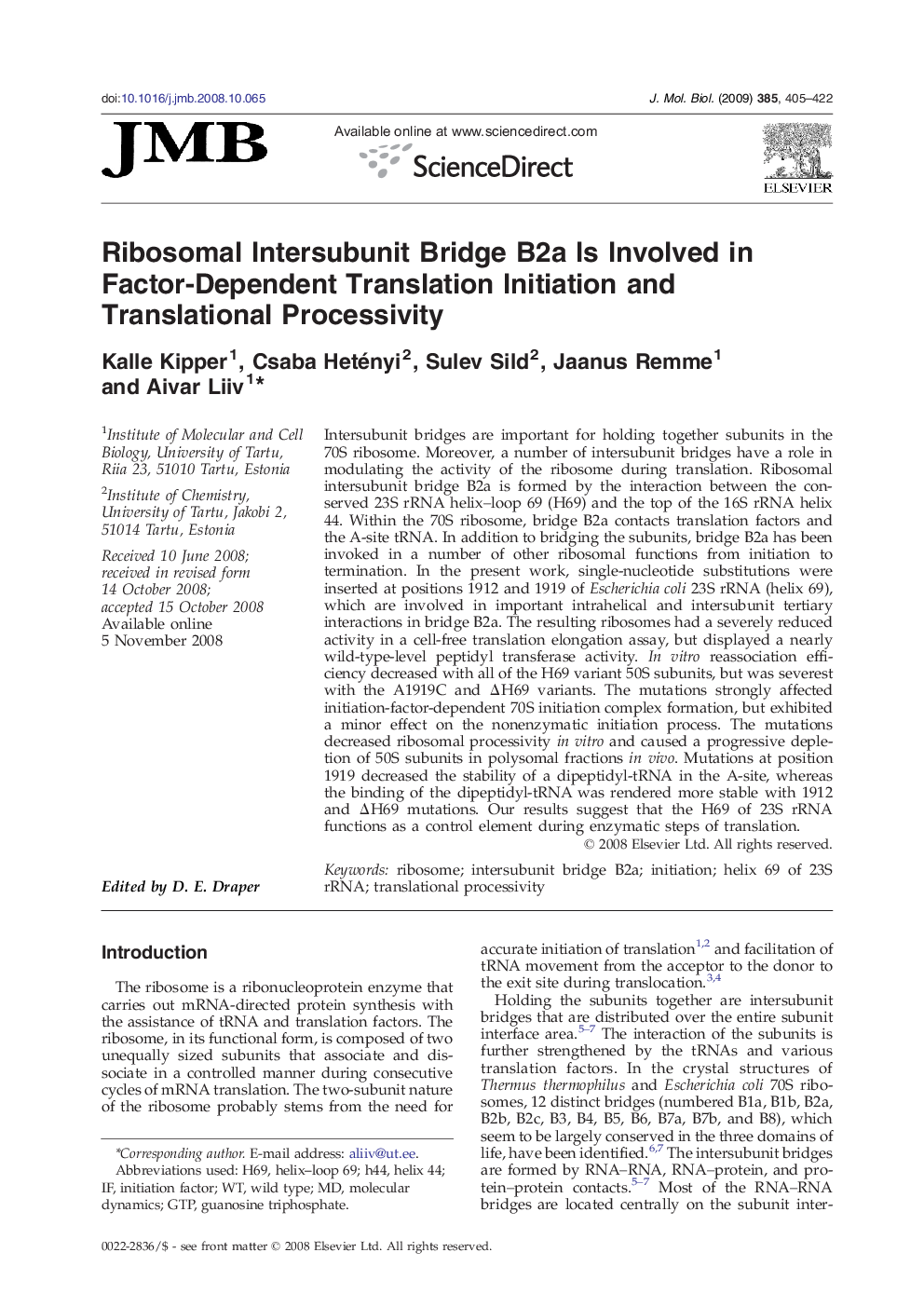| Article ID | Journal | Published Year | Pages | File Type |
|---|---|---|---|---|
| 2187153 | Journal of Molecular Biology | 2009 | 18 Pages |
Intersubunit bridges are important for holding together subunits in the 70S ribosome. Moreover, a number of intersubunit bridges have a role in modulating the activity of the ribosome during translation. Ribosomal intersubunit bridge B2a is formed by the interaction between the conserved 23S rRNA helix–loop 69 (H69) and the top of the 16S rRNA helix 44. Within the 70S ribosome, bridge B2a contacts translation factors and the A-site tRNA. In addition to bridging the subunits, bridge B2a has been invoked in a number of other ribosomal functions from initiation to termination. In the present work, single-nucleotide substitutions were inserted at positions 1912 and 1919 of Escherichia coli 23S rRNA (helix 69), which are involved in important intrahelical and intersubunit tertiary interactions in bridge B2a. The resulting ribosomes had a severely reduced activity in a cell-free translation elongation assay, but displayed a nearly wild-type-level peptidyl transferase activity. In vitro reassociation efficiency decreased with all of the H69 variant 50S subunits, but was severest with the A1919C and ΔH69 variants. The mutations strongly affected initiation-factor-dependent 70S initiation complex formation, but exhibited a minor effect on the nonenzymatic initiation process. The mutations decreased ribosomal processivity in vitro and caused a progressive depletion of 50S subunits in polysomal fractions in vivo. Mutations at position 1919 decreased the stability of a dipeptidyl-tRNA in the A-site, whereas the binding of the dipeptidyl-tRNA was rendered more stable with 1912 and ΔH69 mutations. Our results suggest that the H69 of 23S rRNA functions as a control element during enzymatic steps of translation.
